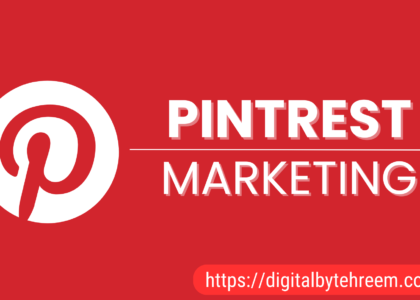Introduction
The digital marketing landscape is evolving at breakneck speed. By 2025, AI-driven hyper-personalization, immersive technologies, and privacy-centric strategies will redefine how brands connect with audiences. With global digital ad spend projected to exceed $1 trillion by 2025 (Statista), marketers must adapt or risk obsolescence. This blog unpacks the key trends, tools, and strategies shaping the future.
1. AI & Hyper-Personalization: Beyond Basic Targeting
Prediction: *70% of marketers will leverage AI for real-time personalization by 2025 (Gartner).*
- Dynamic Content Generation: Tools like ChatGPT-5 and Claude 3 will craft personalized emails, ads, and product descriptions in milliseconds.
- Predictive Analytics: AI will forecast customer behavior (e.g., churn risk, purchase intent) using zero-party data (voluntary user-provided data).
- Case Study: Netflix’s AI-driven recommendations already drive 80% of watched content—expect similar tactics in e-commerce and B2B.
Actionable Tip: Invest in AI platforms (e.g., Adobe Sensei, HubSpot AI) to automate segmentation and content customization.
2. Voice & Visual Search: The New Frontier
Prediction: *50% of searches will be voice/visual-based by 2025 (Google).*
- Voice Commerce: Smart speakers (Amazon Alexa, Google Home) will facilitate hands-free purchases. Optimize for conversational keywords (e.g., “Where can I buy eco-friendly sneakers near me?”).
- Visual Search: Pinterest Lens and Google Lens let users search via images. Use high-resolution visuals and structured data to rank.
- Impact: Local businesses will thrive through “near me” voice queries.
Actionable Tip: Implement schema markup for products and use natural language in content.
3. Video Dominance: Short-Form & Interactive Content
Stat: 88% of consumers want more brand videos (Wyzowl).
- Short-Form Video: TikTok, Instagram Reels, and YouTube Shorts will capture 60% of social media engagement.
- Live Shopping: Interactive live streams (e.g., Amazon Live, TikTok Shop) merge entertainment and instant purchasing.
- 360° & AR Videos: IKEA’s AR app (which lets users visualize furniture at home) exemplifies immersive engagement.
Actionable Tip: Repurpose long-form content into snackable videos. Use polls, Q&As, and shoppable tags.
4. Privacy-First Marketing: Life After Cookies
Regulation Shift: Chrome’s 2024 cookie deprecation demands new tracking approaches.
- Solutions:
- Zero-Party Data: Collect data directly via quizzes, surveys, or loyalty programs.
- Contextual Advertising: Target based on page content (e.g., a vegan recipe blog for plant-based products).
- Privacy Tech: Clean rooms (Google’s Privacy Sandbox) enable anonymized data collaboration.
- Trust Economy: 75% of consumers will only engage with brands that transparently use data (Cisco).
Actionable Tip: Audit data collection practices. Prioritize value exchanges (e.g., discounts for data consent).
5. Social Commerce: Seamless Buying Journeys
Growth: Social commerce sales to hit $1.2 trillion by 2025 (Accenture).
- Platform Integration: Instagram Shops, Facebook Marketplace, and TikTok’s “Shop Now” buttons turn feeds into storefronts.
- Community-Driven Sales: Leverage micro-influencers (under 100K followers) for authentic UGC and reviews.
- Chat Commerce: WhatsApp and Messenger enable checkout via chatbots.
Actionable Tip: Design mobile-first product galleries. Test shoppable Instagram Reels.
6. AR/VR & the Metaverse: Immersive Experiences
Opportunity: 30% of brands will have metaverse activations by 2025 (Forbes).
- Virtual Try-Ons: Sephora’s Virtual Artist boosted conversion rates by 11%.
- Metaverse Pop-Ups: Nike’s .SWOOSH platform sells virtual sneakers, creating new revenue streams.
- B2B Use Cases: Virtual product demos and trade shows (e.g., Meta Horizon Workrooms).
Actionable Tip: Start small—use Instagram or Snapchat AR filters for virtual trials.
7. Sustainability & Ethical Marketing: Purpose Matters
Consumer Demand: 73% of millennials pay more for sustainable brands (Nielsen).
- Green SEO: Optimize for keywords like “eco-friendly,” “carbon-neutral,” or “upcycled.”
- Transparent Storytelling: Share supply chain journeys (e.g., Allbirds’ carbon footprint labels).
- Avoid Greenwashing: Back claims with certifications (B Corp, Fair Trade).
Actionable Tip: Audit operations for sustainability gaps. Promote initiatives via impact reports.
8. Blockchain & Web3: Trust and Ownership
Innovations:
- Token-Gated Loyalty Programs: NFTs unlock exclusive perks (Starbucks Odyssey).
- Decentralized Engagement: DAOs (Decentralized Autonomous Organizations) let communities co-create products.
- Transparent Ad Metrics: Blockchain verifies ad delivery and combats fraud.
Actionable Tip: Experiment with NFTs for VIP access or collectibles.
Conclusion: Adapt or Get Left Behind
Digital marketing in 2025 hinges on three pillars: hyper-personalization, privacy-compliance, and immersive experiences. Winners will:
- Use AI ethically to anticipate needs.
- Build trust through transparency.
- Blur digital-physical lines via AR/metaverse.
The brands thriving in 2025 aren’t just chasing algorithms—they’re building human-centric, tech-enabled relationships. Start testing one trend today. Your future customers are waiting.





